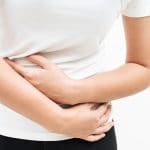
 If you are planning to get pregnant, it can help to know when you are ovulating. You cannot get pregnant without ovulating; therefore, you need to plan intercourse around your ovulation. What is tricky about this process is that ovulation occurs at different times in different women. Some women will ovulate monthly on the same day of their cycle. Some women will ovulate during varying days every month. Not everyone is the same, but thankfully there are signs and symptoms to help you know when you are ovulating. Understanding these signs can help you have more success when trying to get pregnant.
If you are planning to get pregnant, it can help to know when you are ovulating. You cannot get pregnant without ovulating; therefore, you need to plan intercourse around your ovulation. What is tricky about this process is that ovulation occurs at different times in different women. Some women will ovulate monthly on the same day of their cycle. Some women will ovulate during varying days every month. Not everyone is the same, but thankfully there are signs and symptoms to help you know when you are ovulating. Understanding these signs can help you have more success when trying to get pregnant.
Generally women have a menstrual cycle that lasts around 28 days. This counts from the first day of your period to the first day of your next period. This is not exact as every woman has a different cycle and it is not uncommon for a woman’s cycle to vary from month to month. Ovulation will generally occur during the halfway point of your menstrual cycle. By keeping track of your period, you can help narrow down when you may be ovulating.
Aside from math, your body is your best indicator of when you are ovulating. Here are some signs to look for:
- Cramping
There are some women, around 20%, that will experience cramping during ovulation. This could just be a twinge of pain here and there or an actual series of cramping. This will take place in your lower abdomen and on the side that you are ovulating from. This can be one of several signs to indicate a woman is ovulating and fertility may take place.
- Cervical Fluid
Just prior to and during ovulation, there will be cervical fluid that is released to let you know that you are close to or are actually ovulating at that moment in time. For most women, this liquid will resemble egg whites, which is quite distinctive from the rest of the cycle. On the day with the most fluid is typically the actual day that ovulation actually takes place.
- Basal Temperature
Your basal temperature is typically consistent at all times, though this changes during ovulation. As your body gets closer to ovulation, this temperature may decline slightly. After ovulation, this temperature will quickly rise up. That rise will let you know that you are ovulating. By tracking this temperature, you can help to figure out when you are ovulating every month.
A woman is most fertile the day prior to and the day of ovulation. However because sperm can stay live within a woman’s body for up to five days she may conceive up to five days before ovulation. The egg once released remains fertile for about 48 hours.









